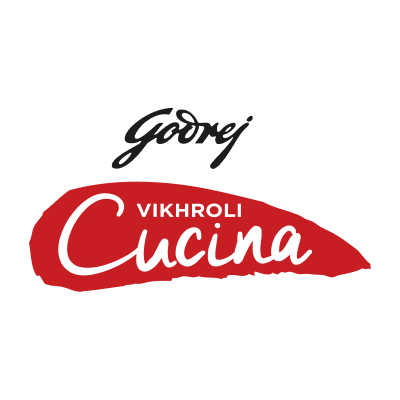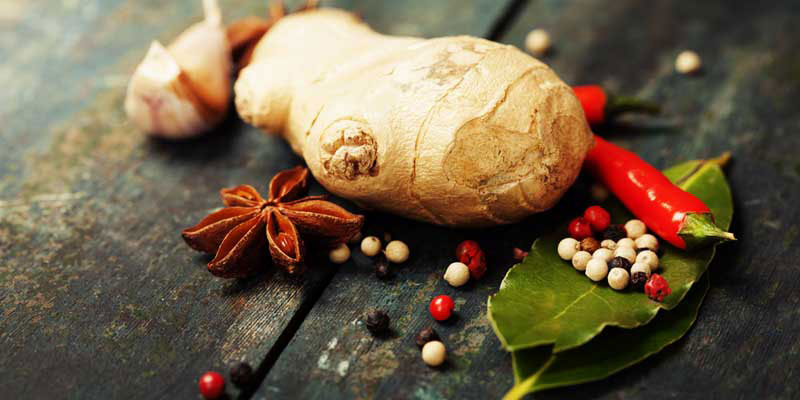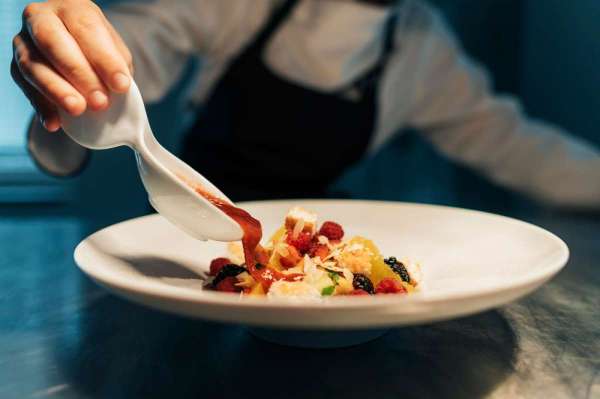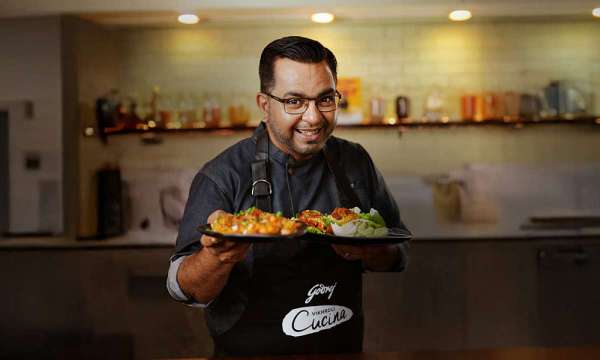
Are You The Pitta, Kapha Or Vata Type? Eat Accordingly, Says Monisha Bharadwaj
UK-based chef-author Monisha Bharadwaj was recently in Mumbai, India, to launch her latest book on Indian cooking, the Indian Cookery Course at the Title Waves bookstore in the suburb of Bandra. Vikhroli Cucina caught up with her to understand the benefits of Ayurvedic cooking. Read on for excerpts from the interview…

An Ayurvedic diet differs from person to person. What suits one individual may not suit another. Ayurveda is all about being true to your constitution, being aware of how different foods affect your body as well as knowing how your body reacts to different environmental factors. In a fast-paced life, ruled by technology, people are more aware of their surroundings rather than themselves. Monisha says, “Internalising has become difficult; you are not mindful about yourself.” This is why she emphasises following an Ayurvedic lifestyle, where one imbibes the food that is needed by the mind, body and spirit.
Ayurveda is a lifestyle
“When you cook for yourself, you know what’s going into your food and how it’s been prepared,” says Monisha. The key to Ayurvedic cooking is to keep your preparations simple with seasonal and fresh ingredients and to eat at your usual meal hours. Most importantly, ditch the phone and TV and concentrate on your meal.

Ayurvedic cooking also stresses cooking according to your environment or the climate you live in. In a hot country like India, one needs to eat spicy food to perspire and cool down. Capsaicin is a compound in chillies that dilates blood vessels, aiding perspiration and cooling the body, which is why Indian cuisine is spicy. In a colder climate like the UK, one doesn’t need to cool down, hence the milder diet with less use of spices in the cuisine.
Understanding your body-mind type
Understanding one’s body-mind type is crucial, because each person processes food differently. Some are more prone to illnesses, while others can’t cope with a high-energy lifestyle. There are differences in our mind-body types and we need to eat accordingly. Monisha explains, “I need a largely vegetarian diet to feel right; I cannot eat meat everyday as it makes me feel heavy and lethargic.” The proper diet can help us become energetic and efficient.
Are you the pitta, kapha or vata type?
Pitta is fire; people belonging to this type should refrain from spicy, sour and acidic food items. They should instead eat cooling things, should avoid eating on the go and have regular meals. Vata is air and people falling under this type need a balanced diet of freshly cooked whole foods. Warm and nourishing foods help balance excess vata; people suffering from vata should avoid cold and raw foods, and indulge in warm food items made in good-quality oils. Kapha is liquid; people who suffer from mucous problems and cough frequently, typically fall under this category.
Often, an individual doesn’t belong to one type, and could be pitta in the summer but vata in the winter. So, knowing one’s type and eating accordingly is very important.
Ayurveda also classifies types of food:
- Satvik food: Food of the saints comprising fruits, vegetables, milk, ghee – simple foods in their natural forms
- Rajasik foods: Rich foods such as meats, butter, cream – items typically found in Mughlai cuisine
- Tamasik foods: Onion, garlic and spices that give rise to base feelings of lust, anger, jealousy, etc.
Importance of the six rasas
The six rasas or tastes – sour, spicy, salt, sweet, bitter, astringent – are very important not only in Ayurvedic cooking but all of Indian cooking. “Our whole diet is based on the balance of these six tastes,” says Monisha. A rasa is an emotion linked to a taste. Monisha says that the six rasas are part of everyday Indian cooking because of the influence of Ayurveda. The bitter taste is the most healing – neem, bitter gourd and fenugreek are all healing foods with great health benefits.
Benefits of spices and condiments that Ayurveda recommends
All spices are good for you as long as they are used in moderation. Spices should be a part of everyday cooking. Monisha’s favourite spice is turmeric – “I absolutely adore turmeric; I drink haldi ki chai every single day. Turmeric is a fabulous antioxidant and a good antiseptic.” Today, the most common spice used in cooking is chillies. Chillies are an important spice and high on vitamin C content, but people tend to over consume it, especially in fast foods. Fennel is good for digestion and cinnamon helps balance blood sugar; cardamom is another good condiment. That’s why Monisha emphasises the importance of cooking one’s own food, because that way we are aware of what’s going in the preparation.
For best results of Ayurvedic cooking:
- Use fresh ingredients
- Make simple food in less time
- Ayurvedic cooking is a lot about time management
- Use few spices and cook at home
0 Comment
You may also like
-

People Chef Vanika Choudhary: Cooking with memory, land and time
by Vikhroli Cucina
-

People Celebrate Raksha Bandhan at Home: Send Rakhi Online with Love!
by Tannu Singh
-

People Meet the Women Putting India on the Artisanal Food Map
by Vikhroli Cucina
-

People Chef Ajay Chopra: Taking India’s flavours to the world, one dish at a time!
by Vikhroli Cucina
